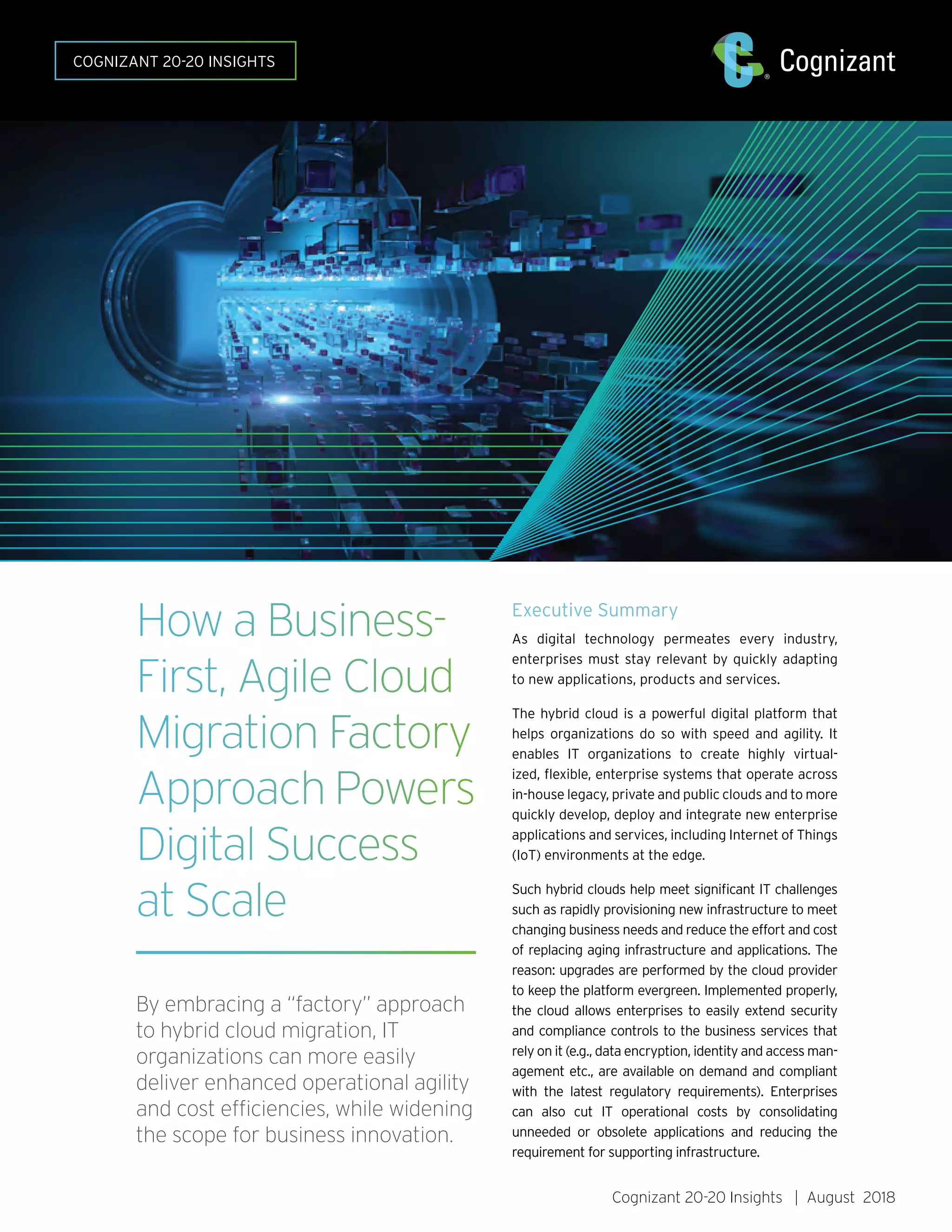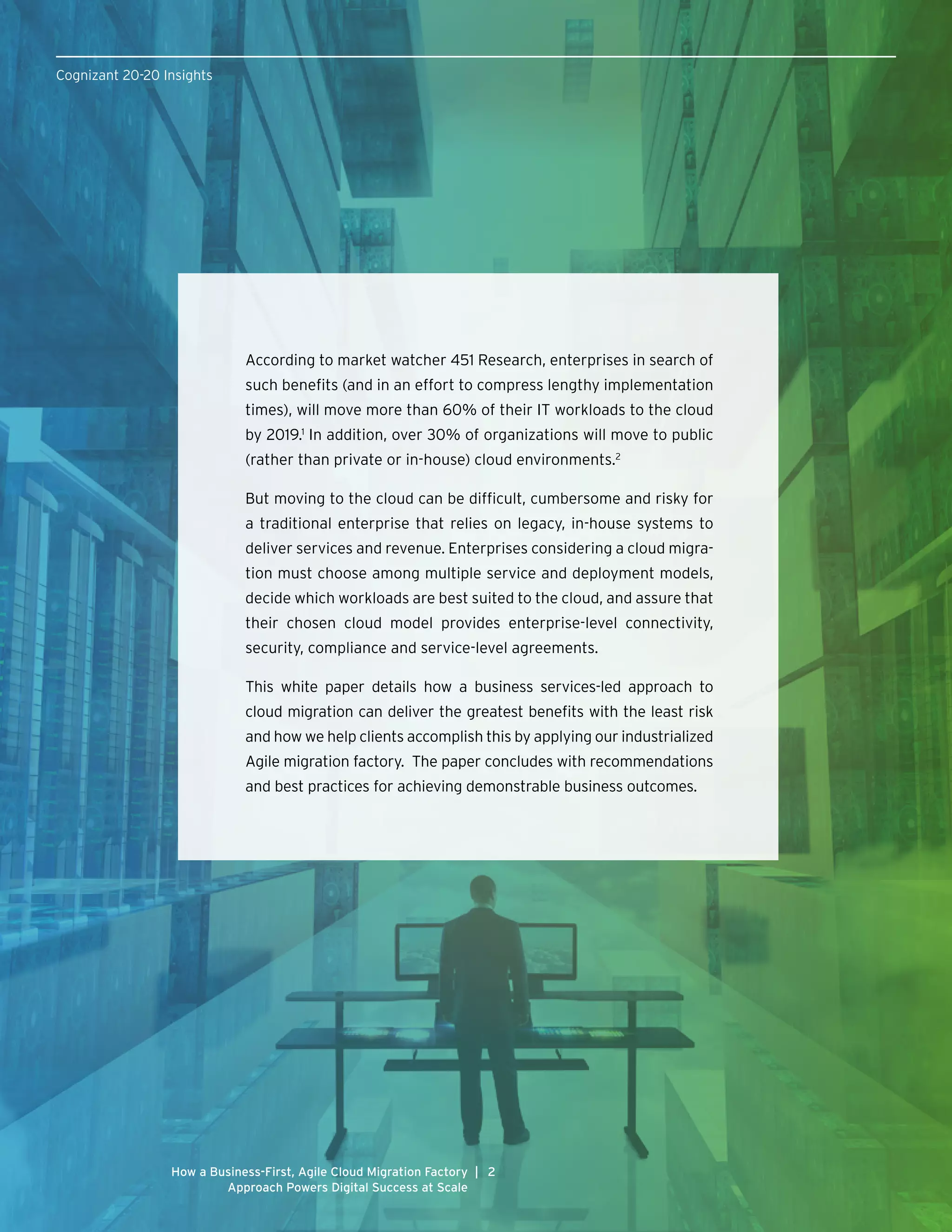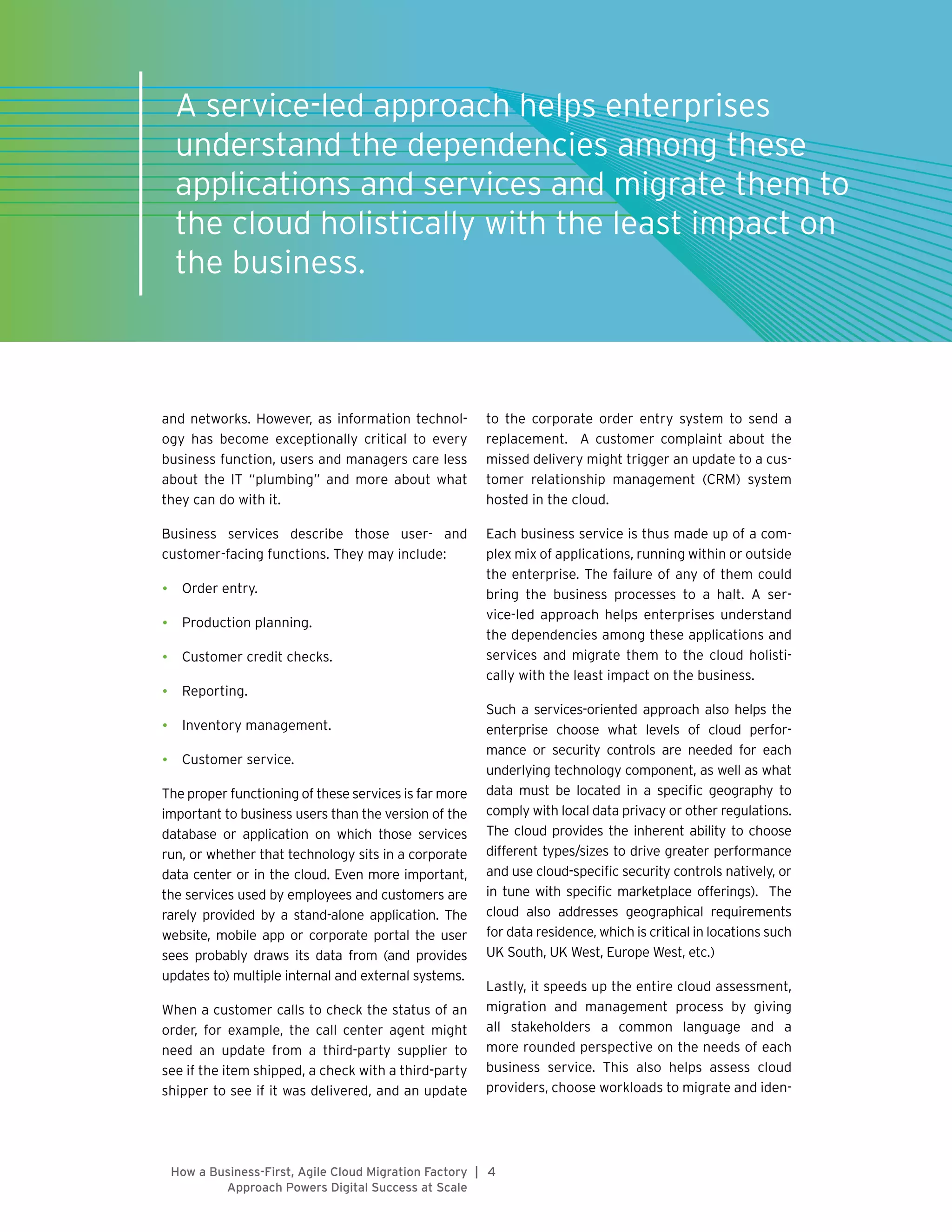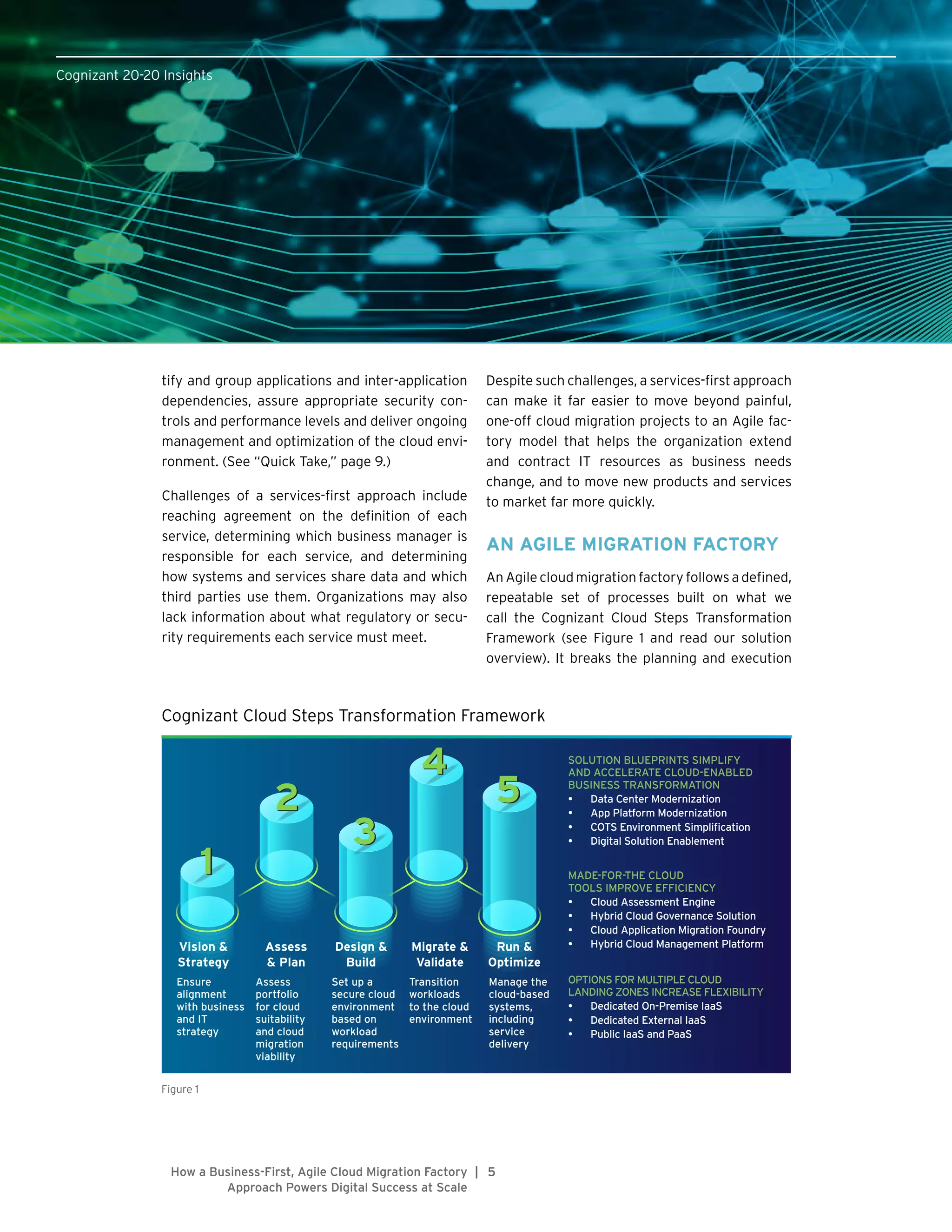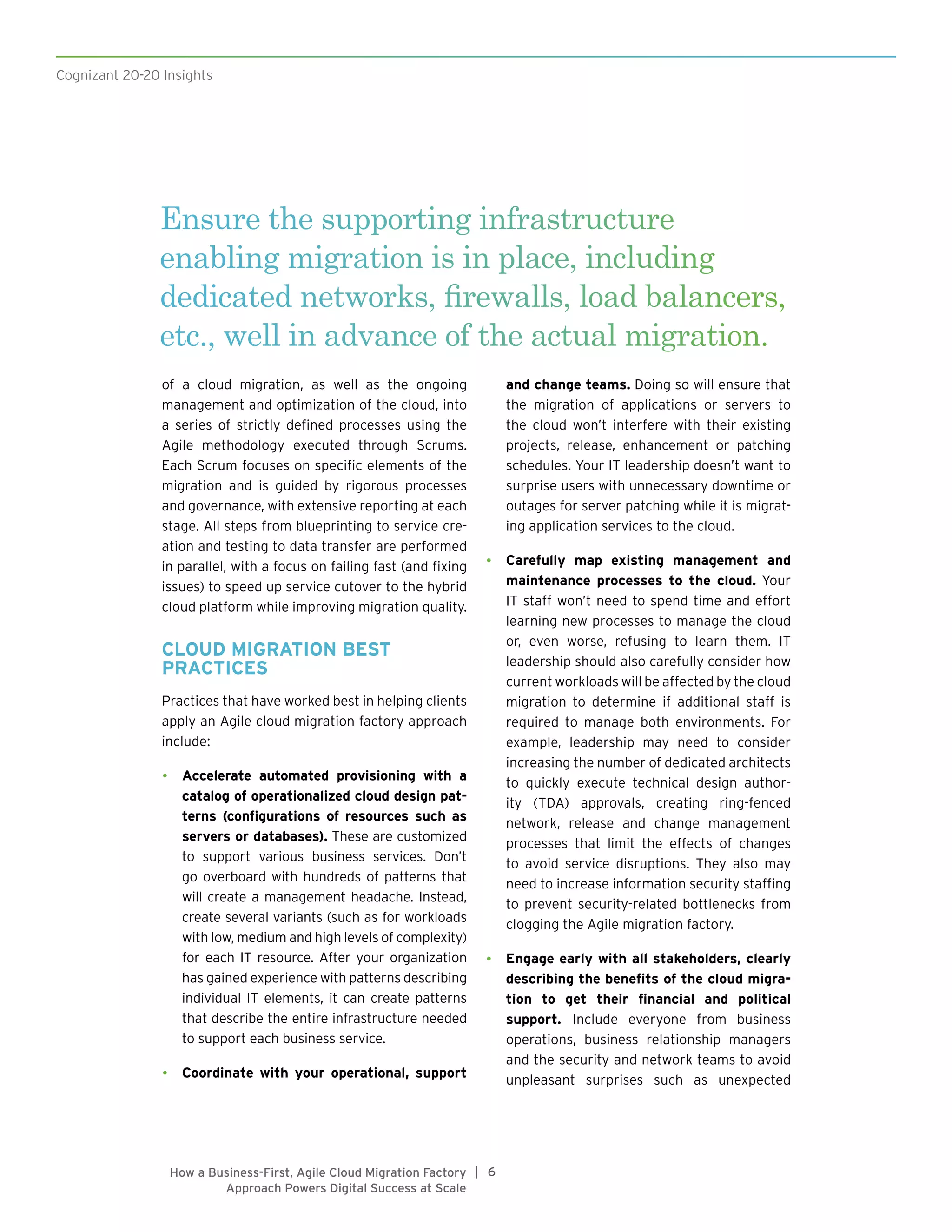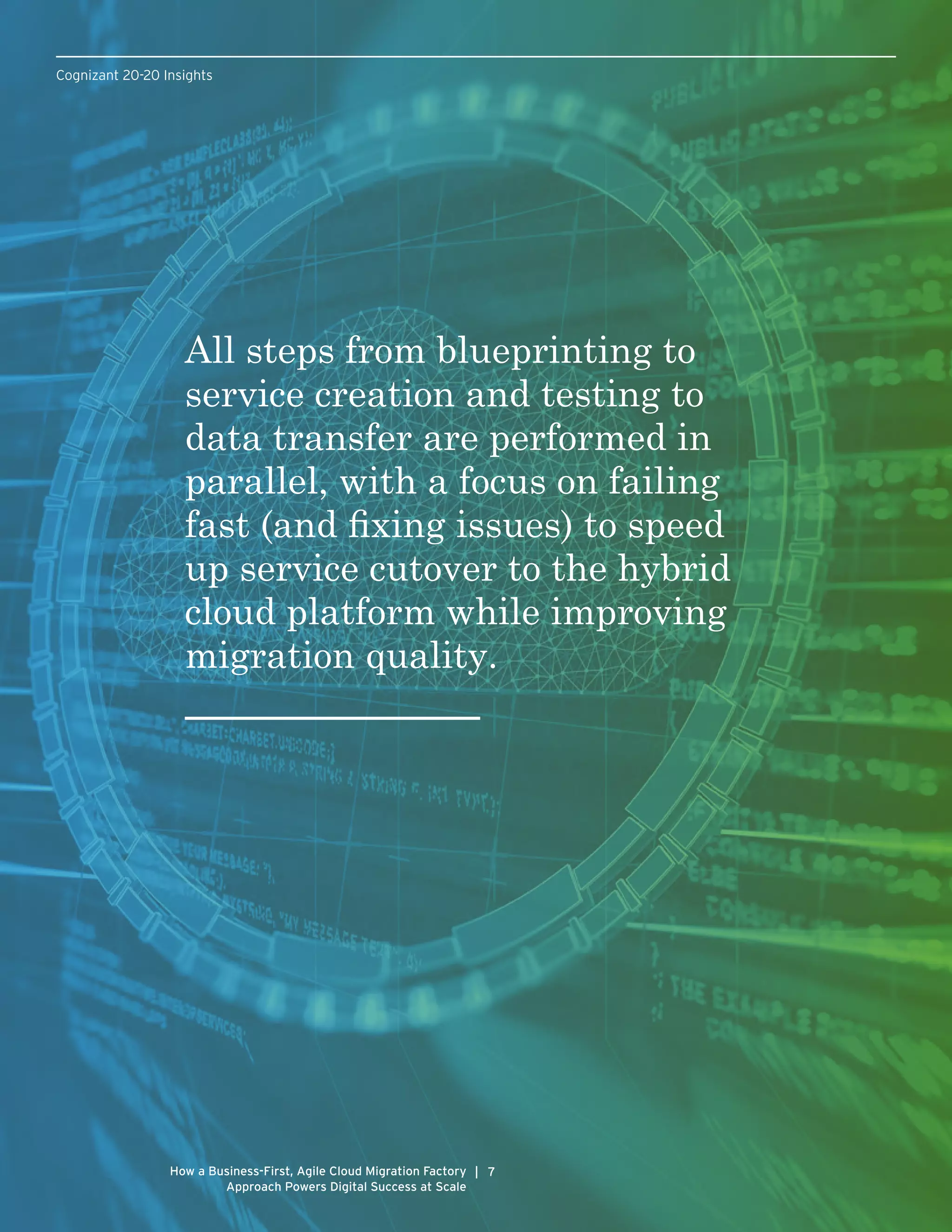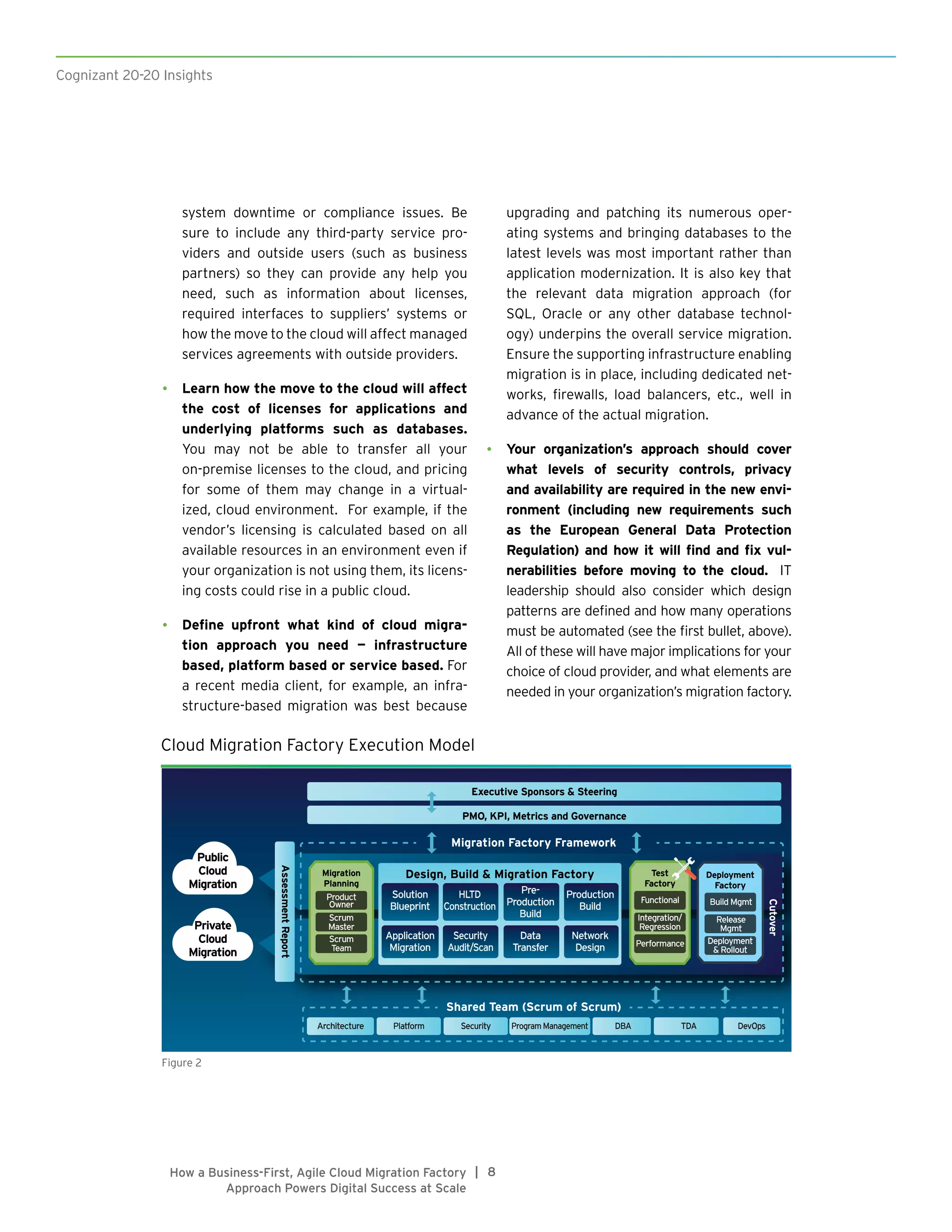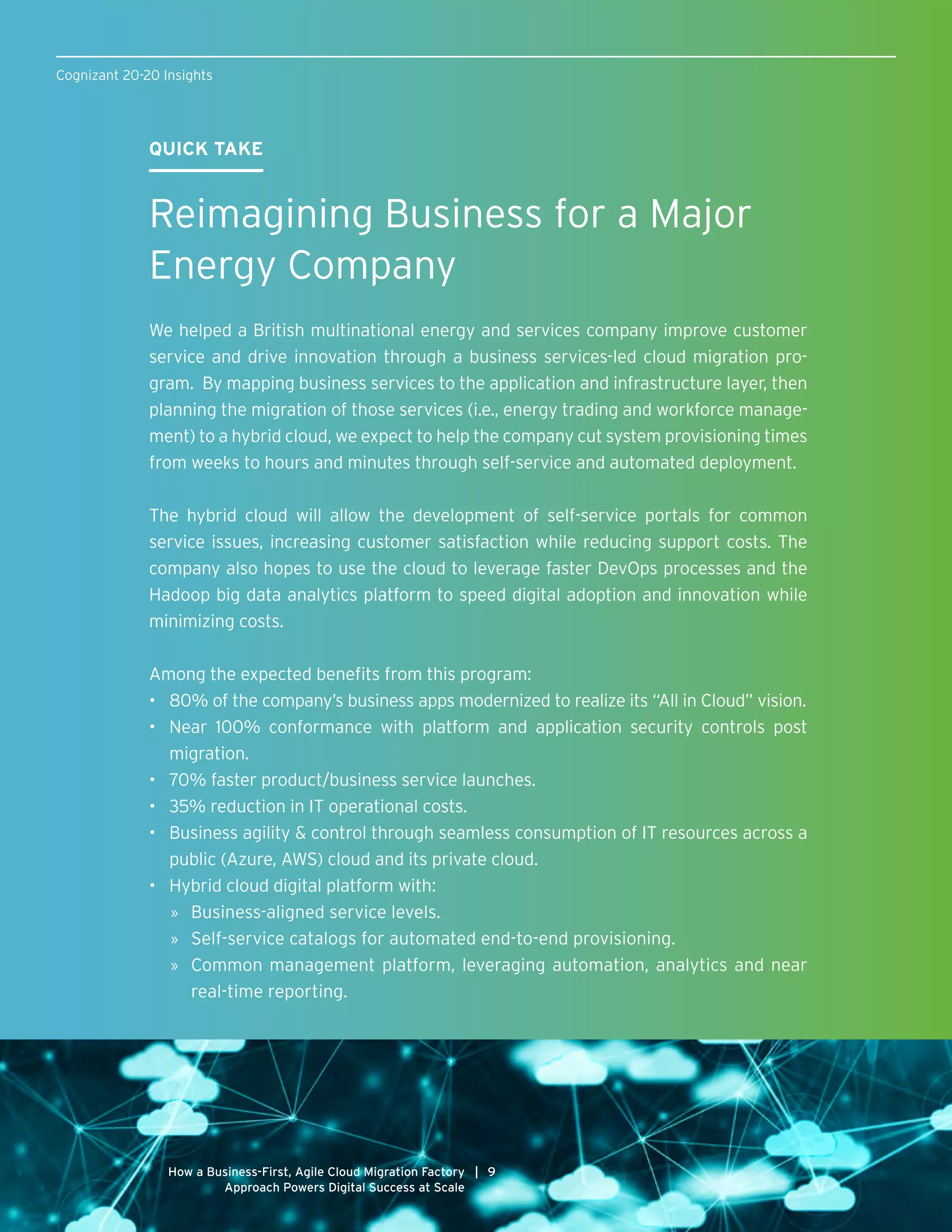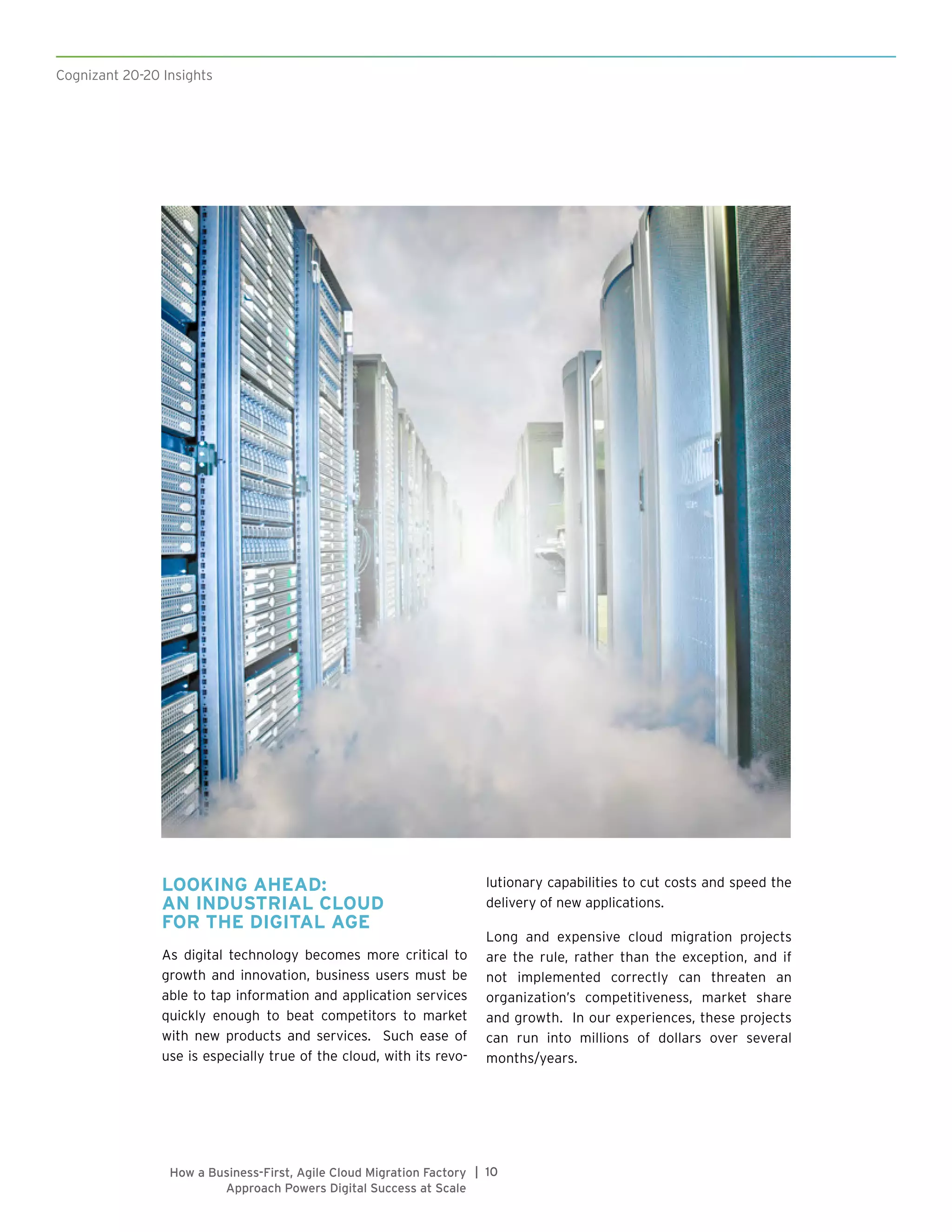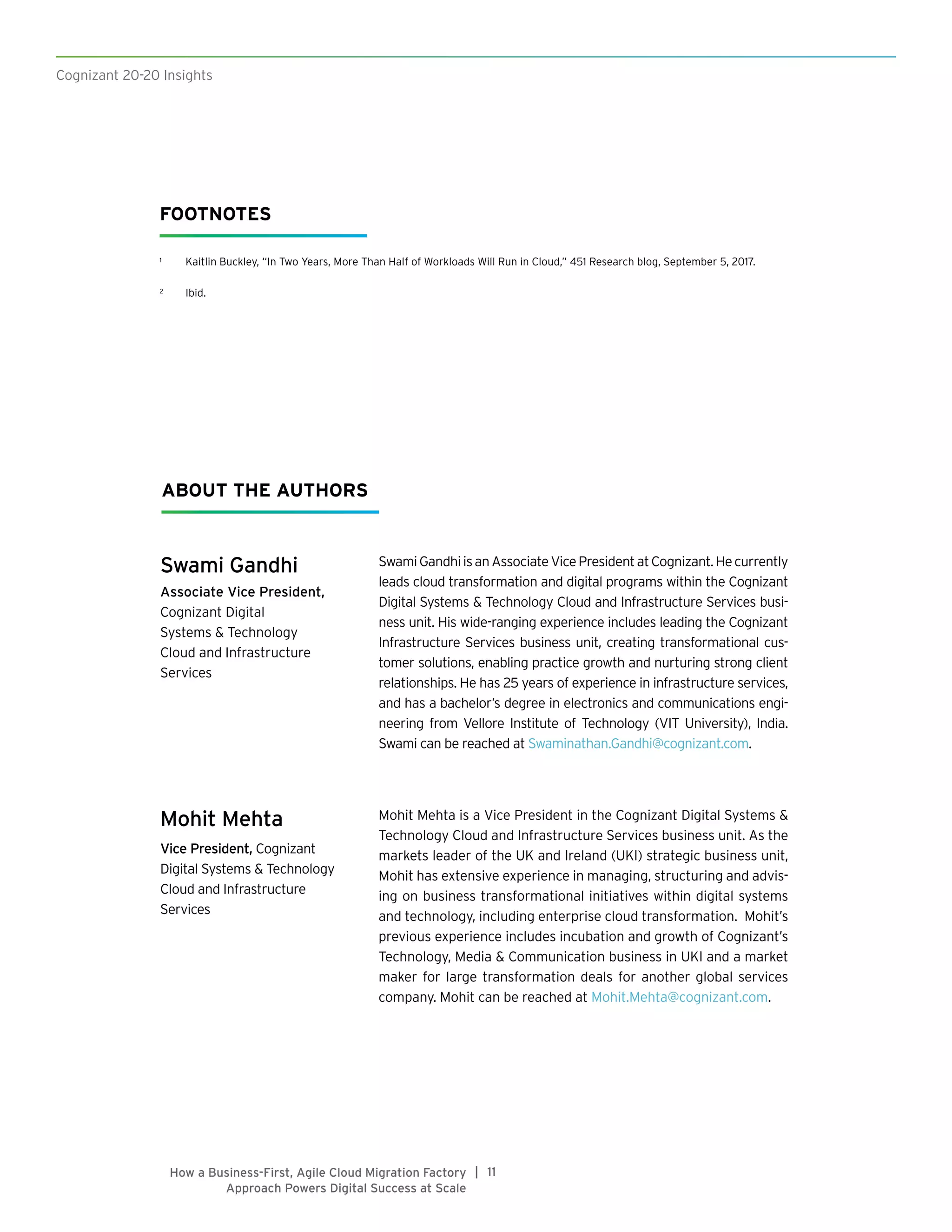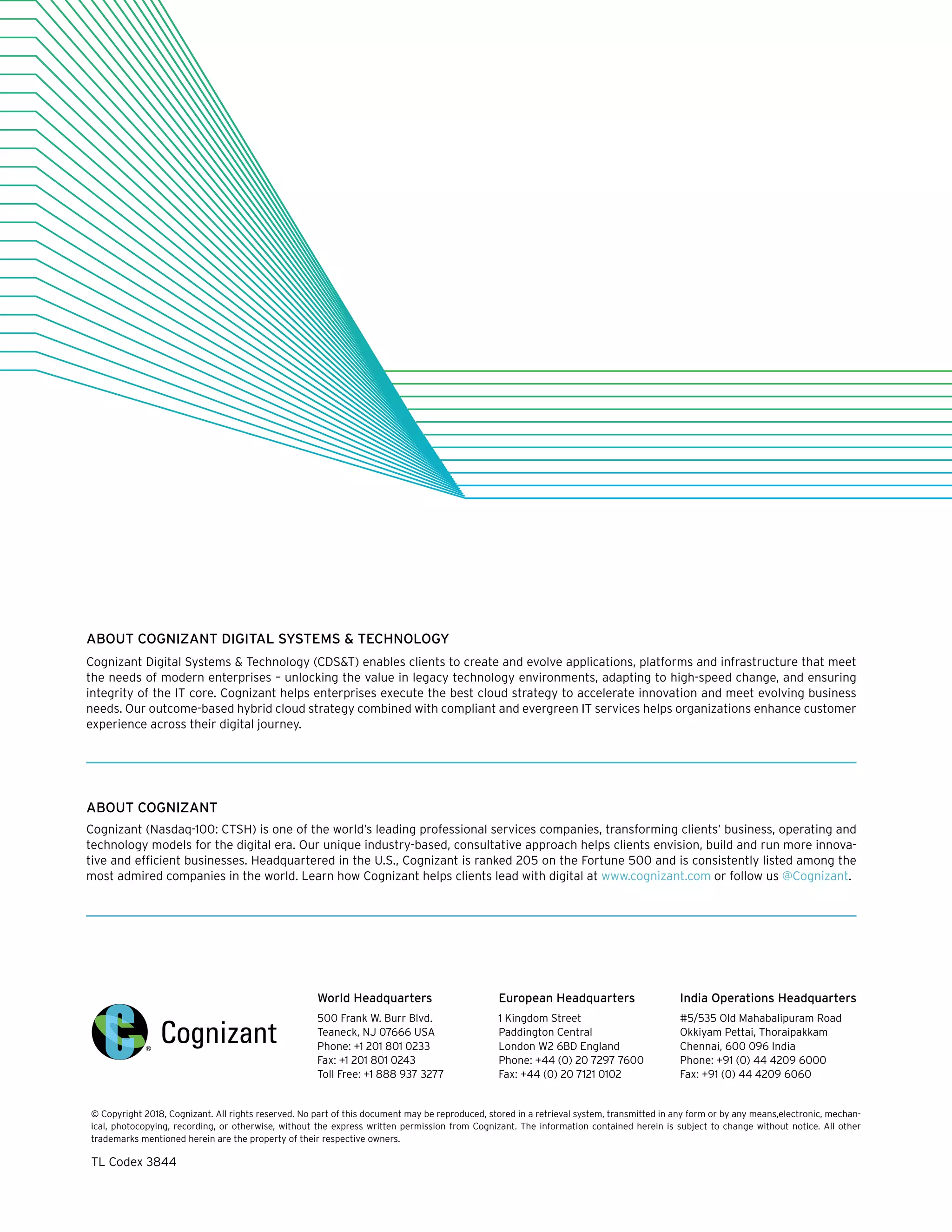The document outlines a business-first approach to agile cloud migration, emphasizing a 'factory' model that enhances operational efficiency, reduces costs, and supports innovation. It discusses the challenges enterprises face in migrating to the cloud and recommends a services-oriented strategy that focuses on business needs over traditional IT structures. The goal is to streamline cloud migrations for quick, effective, and sustainable integration while maintaining compliance and security standards.
